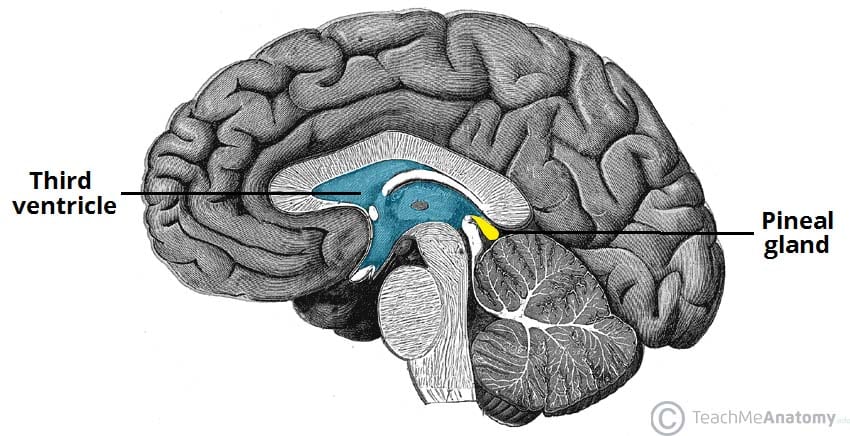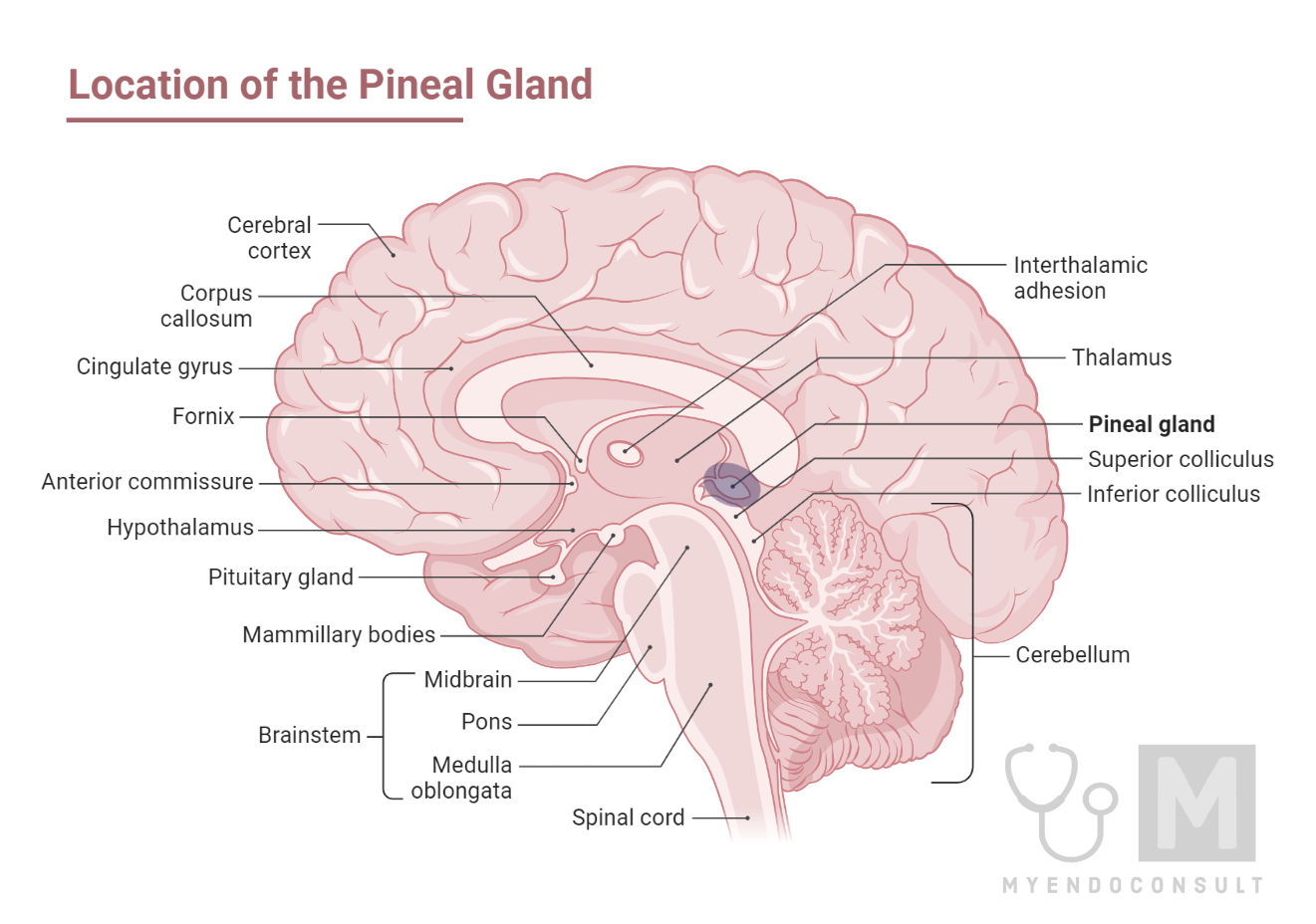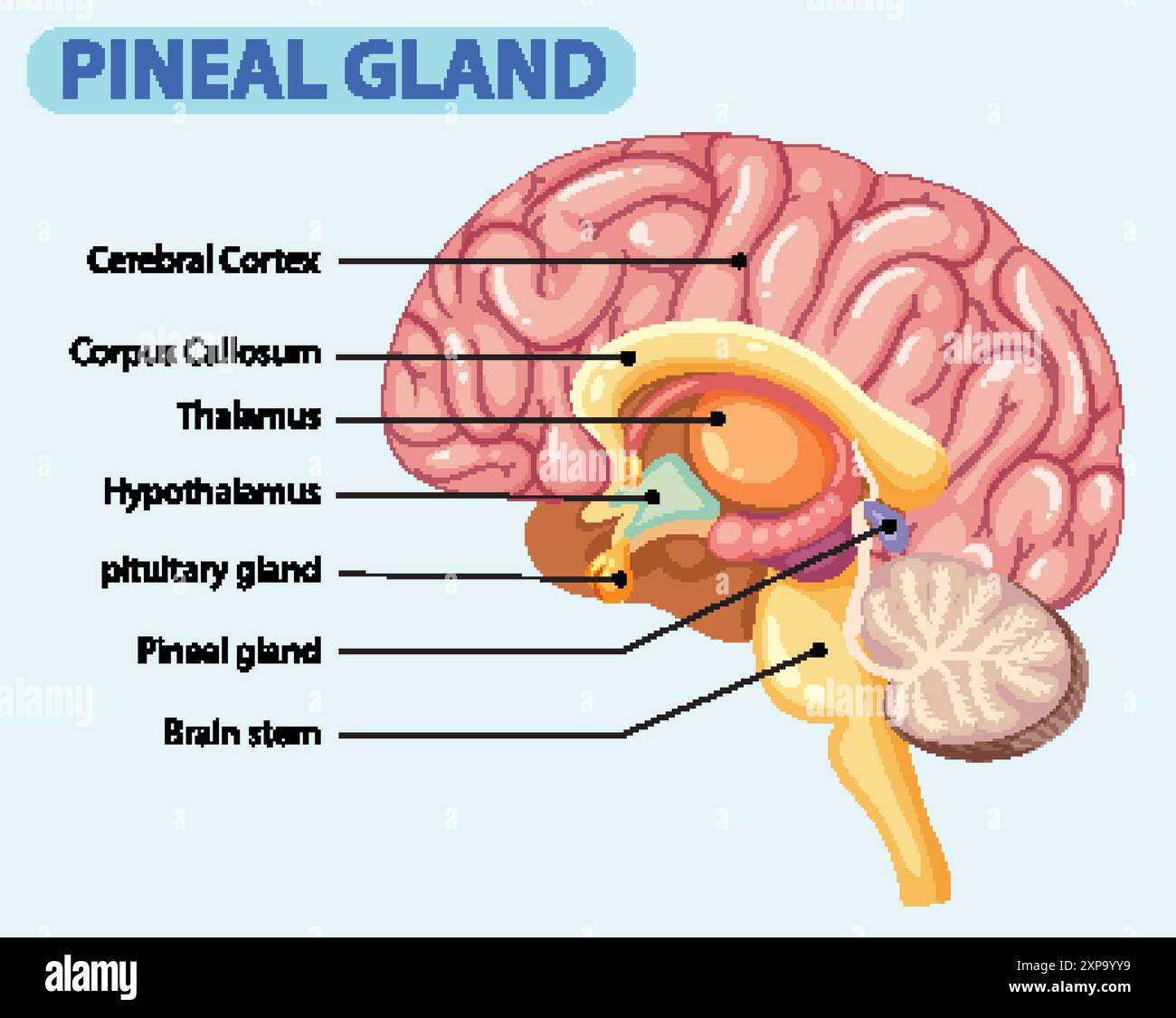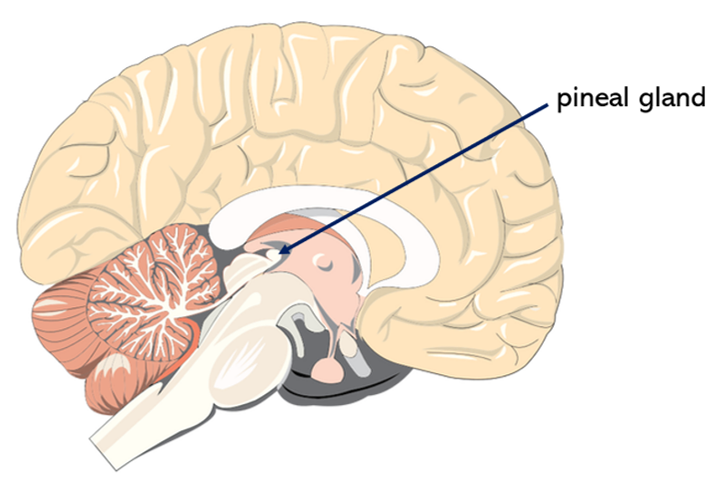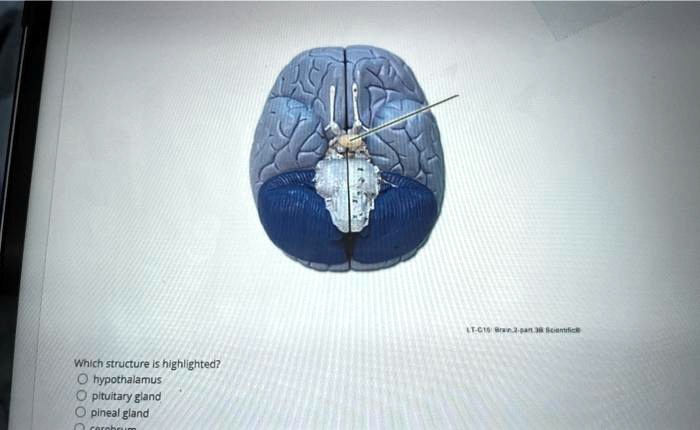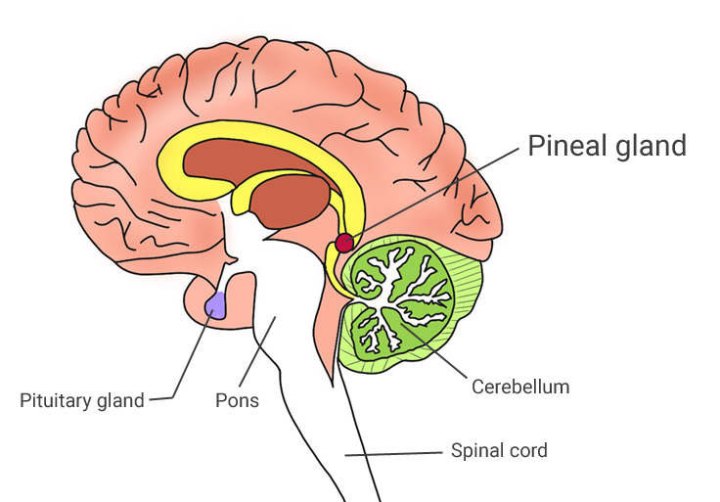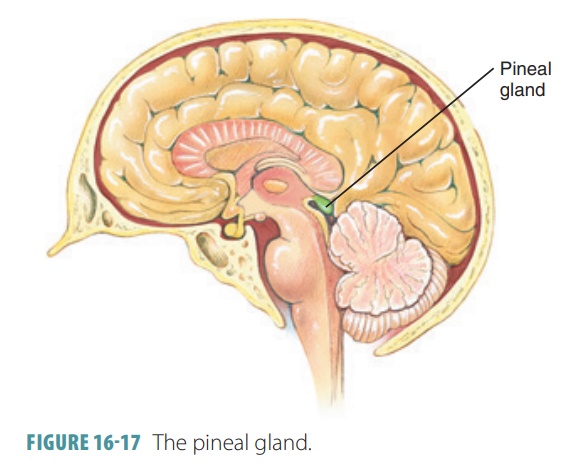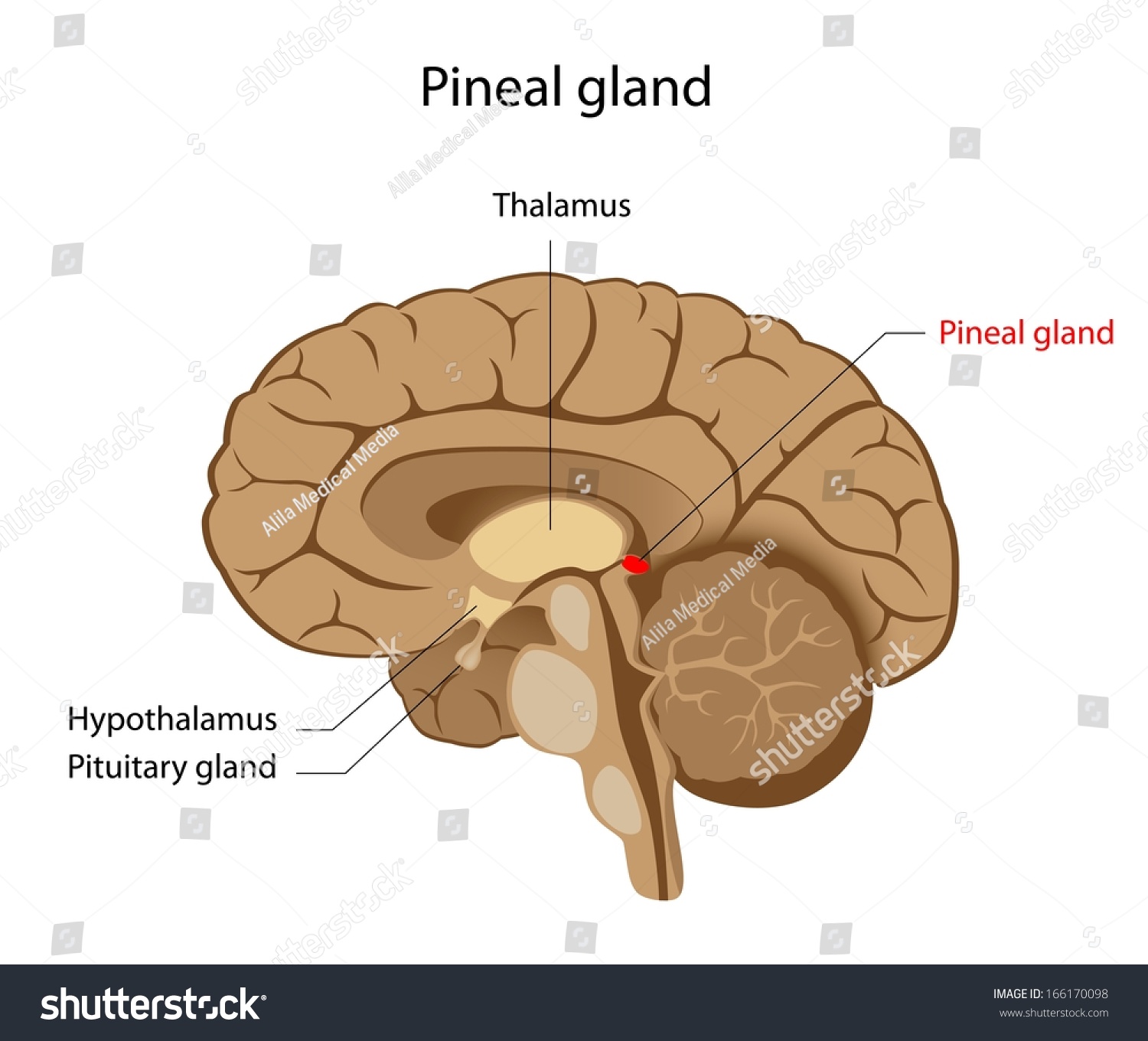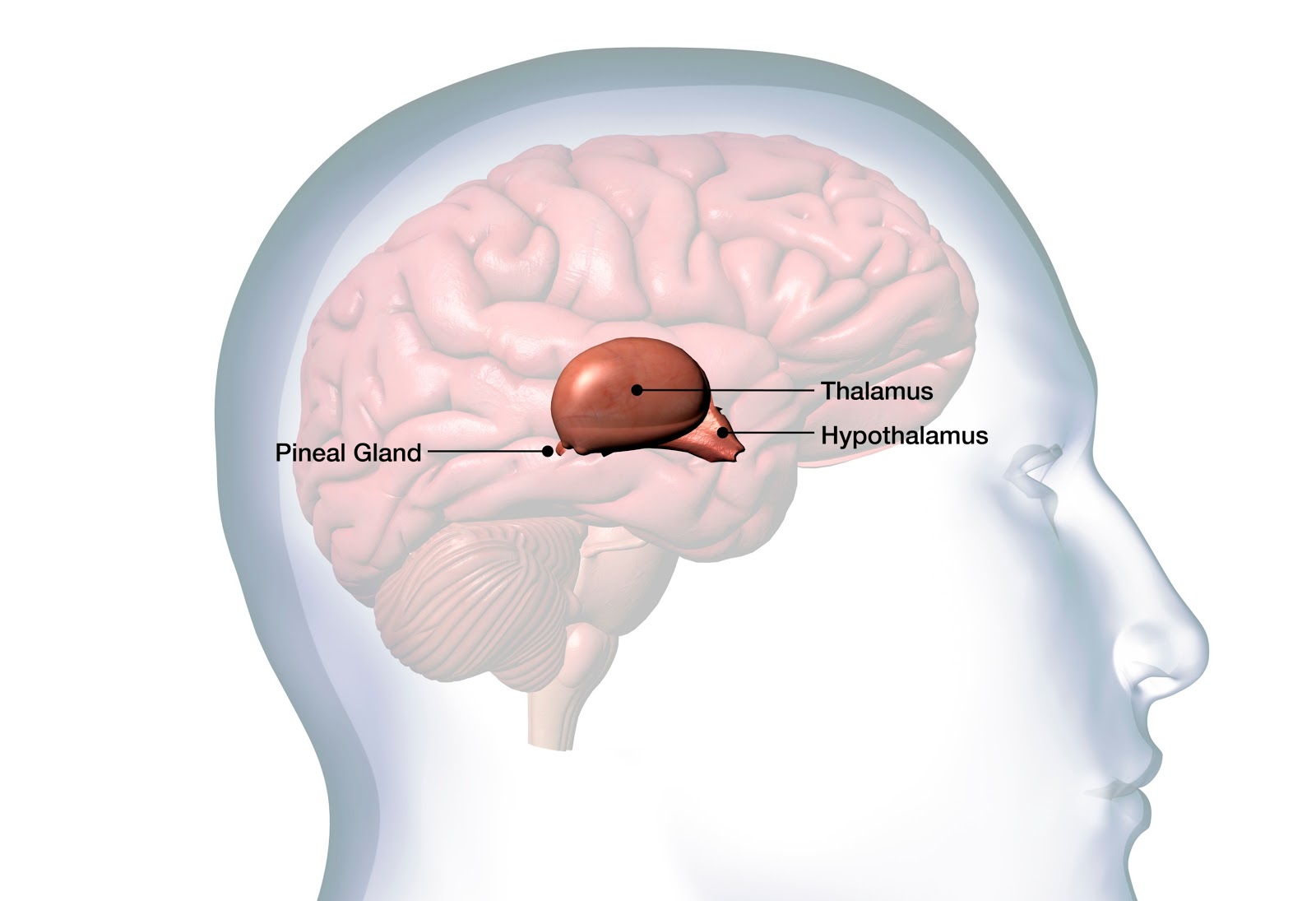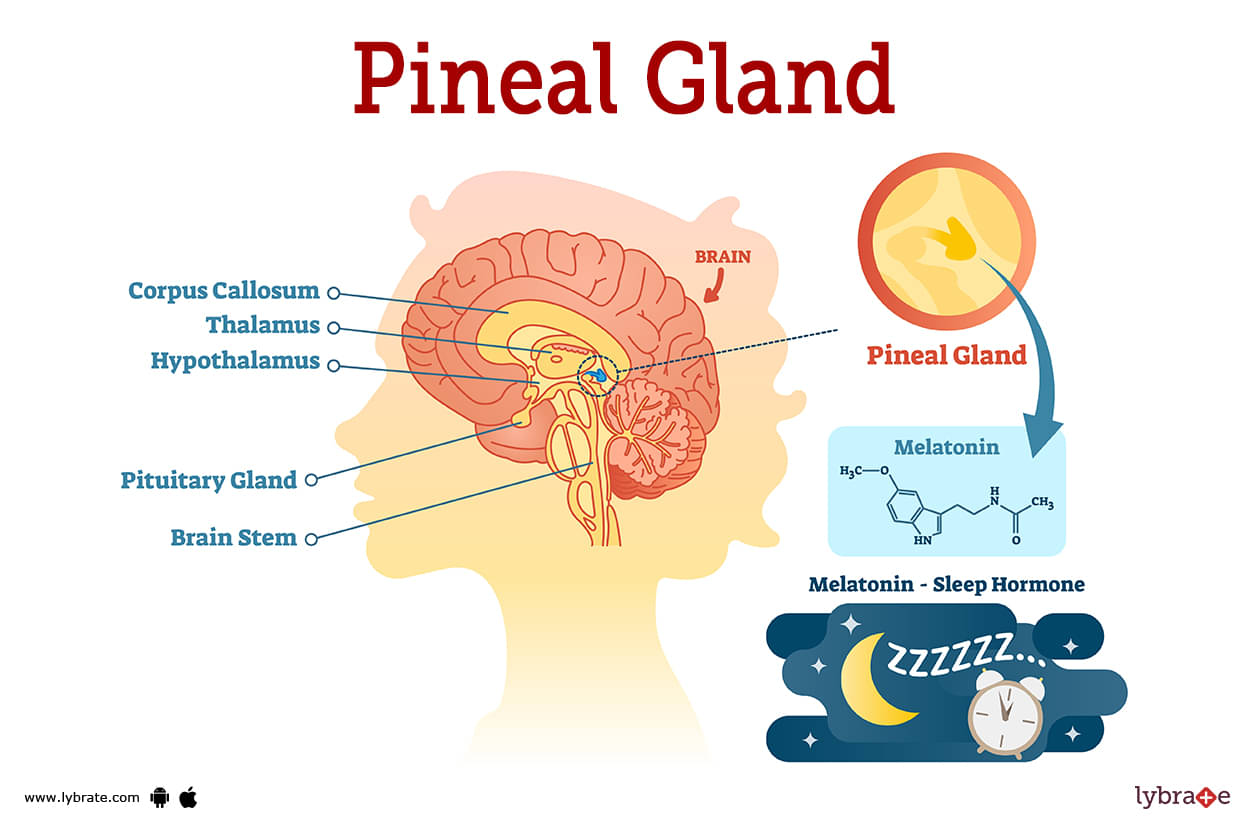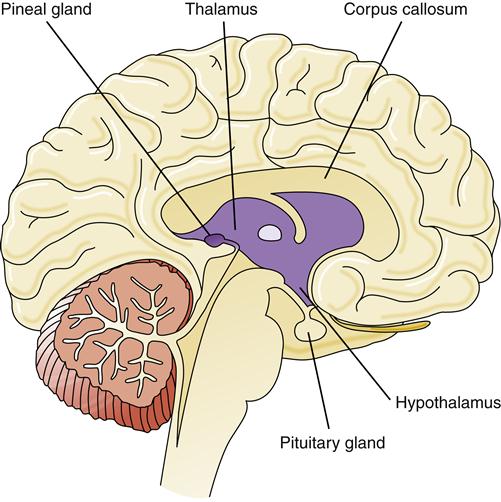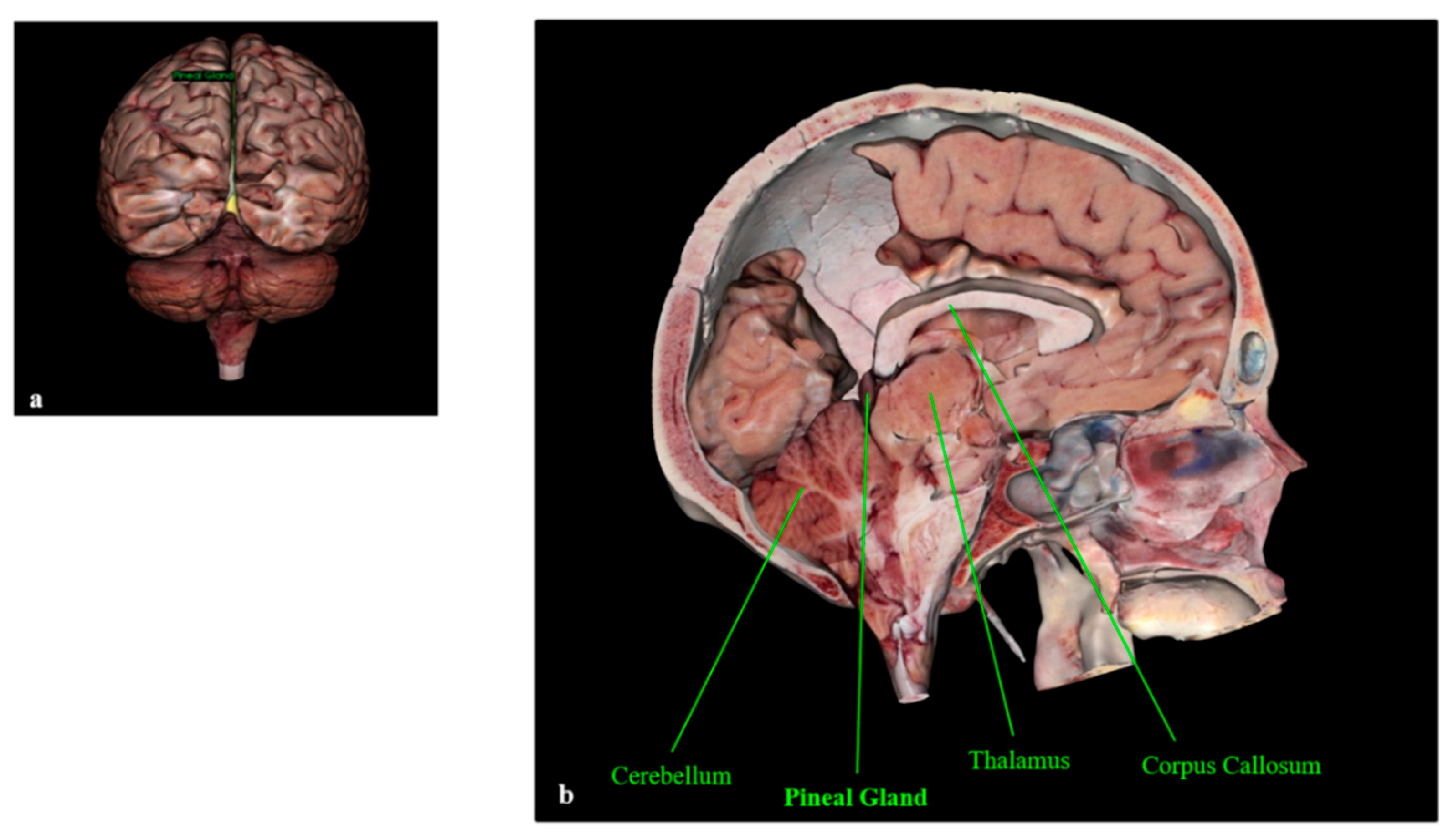Which Structure Is Highlighted Pineal Gland
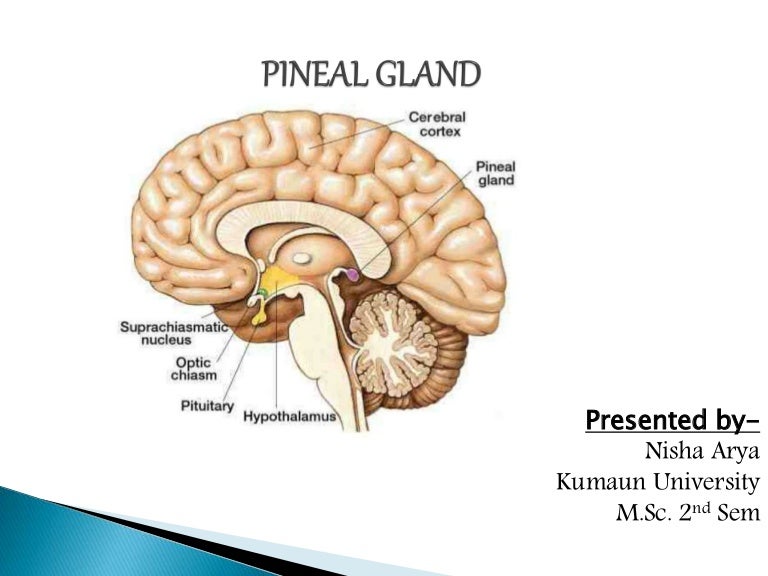
Imagine a world where ancient wisdom meets modern science, where a tiny, pine cone-shaped structure nestled deep within your brain holds the key to unlocking profound secrets. For centuries, mystics, philosophers, and now, scientists, have been captivated by this enigmatic gland, the pineal gland. Its reputation precedes it, whispered about in spiritual circles and increasingly scrutinized in research labs.
This article delves into the pineal gland, exploring its fascinating history, known functions, and the ongoing research aimed at understanding its true potential. We will unpack the science behind its role in regulating sleep-wake cycles, hormonal balance, and even the intriguing, albeit debated, connection to spiritual experiences.
A Glimpse into the Past: The Eye of the Soul
The pineal gland's story is woven with threads of both science and spirituality. Its unique shape, resembling a pine cone, has been recognized across cultures for millennia. Ancient civilizations, including the Egyptians and Babylonians, associated it with enlightenment and higher consciousness.
Perhaps the most famous historical association comes from the 17th-century philosopher René Descartes. He famously referred to the pineal gland as the "seat of the soul," believing it to be the point of connection between the physical body and the ethereal mind.
Descartes' view, though largely philosophical, sparked centuries of speculation and intrigue. It helped solidify the pineal gland's place in the collective consciousness as something far more significant than just another organ.
The Science of Sleep: Melatonin and More
Modern science has peeled back some of the mysteries surrounding the pineal gland. It has revealed its crucial role in producing and secreting melatonin, a hormone vital for regulating sleep-wake cycles, or circadian rhythms.
Melatonin production is influenced by light exposure. In darkness, the pineal gland produces more melatonin, signaling the body to prepare for sleep. This explains why exposure to screens before bed can disrupt sleep patterns.
Beyond sleep, melatonin also plays a role in regulating reproductive hormones, modulating immune function, and acting as a powerful antioxidant. Research continues to explore the full extent of melatonin's influence on our overall health and well-being.
The Curious Case of Calcification
One of the challenges in studying the pineal gland is its tendency to calcify with age. This calcification, or the buildup of calcium deposits, can impair the gland's function, potentially affecting melatonin production.
Researchers are investigating various factors that may contribute to pineal gland calcification, including fluoride exposure and lifestyle choices. Understanding the causes could lead to strategies for preventing or mitigating its effects.
Some studies suggest that reducing fluoride intake, maintaining a healthy diet, and managing stress levels may help support pineal gland health. However, more research is needed to confirm these findings.
The Spiritual Connection: Exploring Deeper Dimensions
The association between the pineal gland and spirituality persists, fueled by anecdotal evidence and ongoing research. Some believe that the pineal gland is capable of producing dimethyltryptamine (DMT), a naturally occurring psychedelic compound.
DMT is known to induce profound altered states of consciousness and spiritual experiences. While the pineal gland's role in DMT production is still debated, the connection remains a compelling area of exploration.
Many spiritual practices, such as meditation and yoga, are believed to stimulate the pineal gland and enhance its function. Proponents suggest that these practices can lead to increased intuition, heightened awareness, and a deeper sense of connection to something larger than oneself.
Research and Future Directions
Scientists are actively pursuing research to better understand the pineal gland's diverse functions and potential. Studies are exploring its role in neurodegenerative diseases, mood disorders, and even cancer.
Advances in neuroimaging technology are allowing researchers to visualize the pineal gland in unprecedented detail. This is opening new avenues for investigating its activity and its interactions with other brain regions.
The ultimate goal is to harness the power of the pineal gland to improve human health and well-being. This could involve developing targeted therapies to enhance melatonin production, prevent calcification, or even unlock the gland's potential for spiritual growth.
A Glimmer of Hope: Embracing the Unknown
The journey to fully understand the pineal gland is far from over. Much remains unknown about its complex functions and its potential impact on our lives. However, the ongoing research and the enduring fascination with this tiny gland offer a glimmer of hope.
Whether viewed as a biological regulator, a spiritual gateway, or a combination of both, the pineal gland continues to intrigue and inspire. It serves as a reminder that there is still much to discover about the human brain and the interconnectedness of mind, body, and spirit.
As we continue to explore the mysteries of the pineal gland, let us approach the subject with both scientific rigor and an open mind. The answers may lie not just in the laboratory, but also in the depths of our own inner experience.
